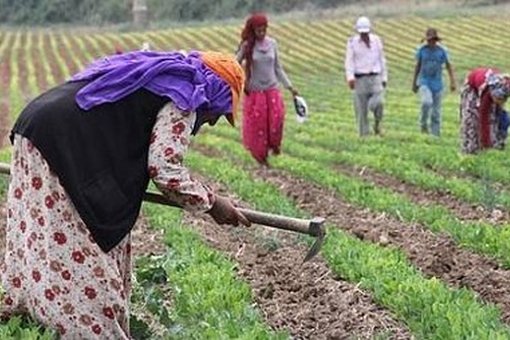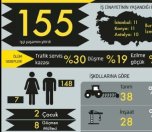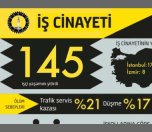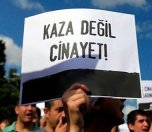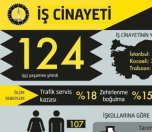Click to read the article in Turkish / Kurdish
The Occupational Health and Safety Assembly (İSİG) has released its August report on occupational safety. 85 percent of the data in the report was gathered from national and local press and 15 percent from workers' colleagues, families, occupational safety experts, workplace physicians and unions.
According to the report, 68 agricultural laborers lost their lives in occupational homicides in August. The total number of occupational homicides in August was 148. Fourteen children, 12 women and 11 immigrants lost their lives in occupational homicides.
At least 159 workers in January, 127 workers in February, 114 workers in March, 153 workers in April, 164 workers in May, 131 workers in June, 178 workers in July lost their lives in occupational homicides. The total number of workers who were killed in occupational homicides in the first eight months of the year was 1,174.
Here are highlights from the report:
* Of the 148 workers, 119 were paid (workers and civil servants) and 29 were self-employed (farmers and artisans).
* 12 of the dead were female workers and 136 were male workers. The killings of female workers took place in agriculture, transportation and health sectors.
* Fourteen children, seven of them under 14 years of age, were killed. Child worker killings took place in agriculture, metal, accommodation and municipal businesses.
* 11 refugee/immigrant workers lost their lives. Of the refugee/immigrant workers, 9 were Syrian, one was Polish and one was Ukrainian.
* Most of the deaths occurred in agriculture, construction, transportation, metal, energy, mining and accommodation/entertainment industries. Unlike the previous months, wage deaths in agriculture have increased: at least 60 percent of those killed in agriculture this month are paid and 40 percent farmers.
* The most common causes of death were traffic/shuttle accident, crush/dent, heart attack, electric shock, fall from a height, poisoning/suffocation, object hitting/fall and suicide.
* In August 52, Turkey's third city in the country and overseas business, we determined that the murder occurred. Most of the occupational homicides took place in Istanbul, Nevşehir, Manisa, İzmir, Mersin, Antalya, Konya, Malatya, Osmaniye, Urfa and Sivas.
* Two of the killed were unionized workers and 146 were non-unionized workers.
Situation of agricultural workers
* Mobile agricultural workers exposed to the worst working conditions are landless peasants as well as small producers who cannot make a living. On the other hand, Adana, Adıyaman, Hatay, Urfa and Düzce are the cities where mobile agricultural labor is most common.
* Women in agriculture account for almost half of total employment. In addition to working in the field, they also do domestic work. In addition, the control of the wages for labor is not in the woman herself, but in fathers or husbands with family authority. Women are paid less than men.
* Seasonal agricultural workers stay in tent cities. Agricultural workers who are physically isolated and prevented from meeting with the local people, lack shelter, nutrition and infrastructure. Again, children do not have the opportunity for education.
* Workers are transported under unfavorable conditions such as in closed box vans and tractor trailers. However, despite the adoption of circulars such as improving the working and social life of seasonal agricultural workers and transportation, the state does not comply with its own laws. (HA/VK)




